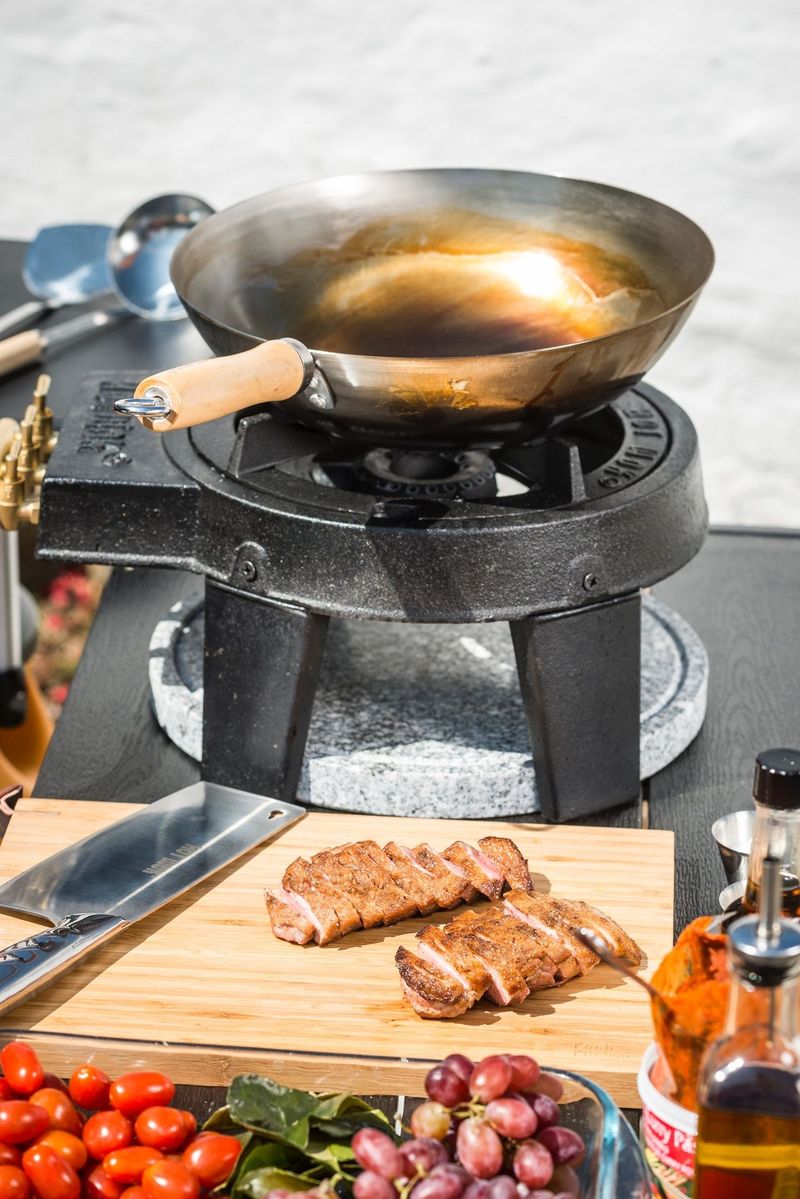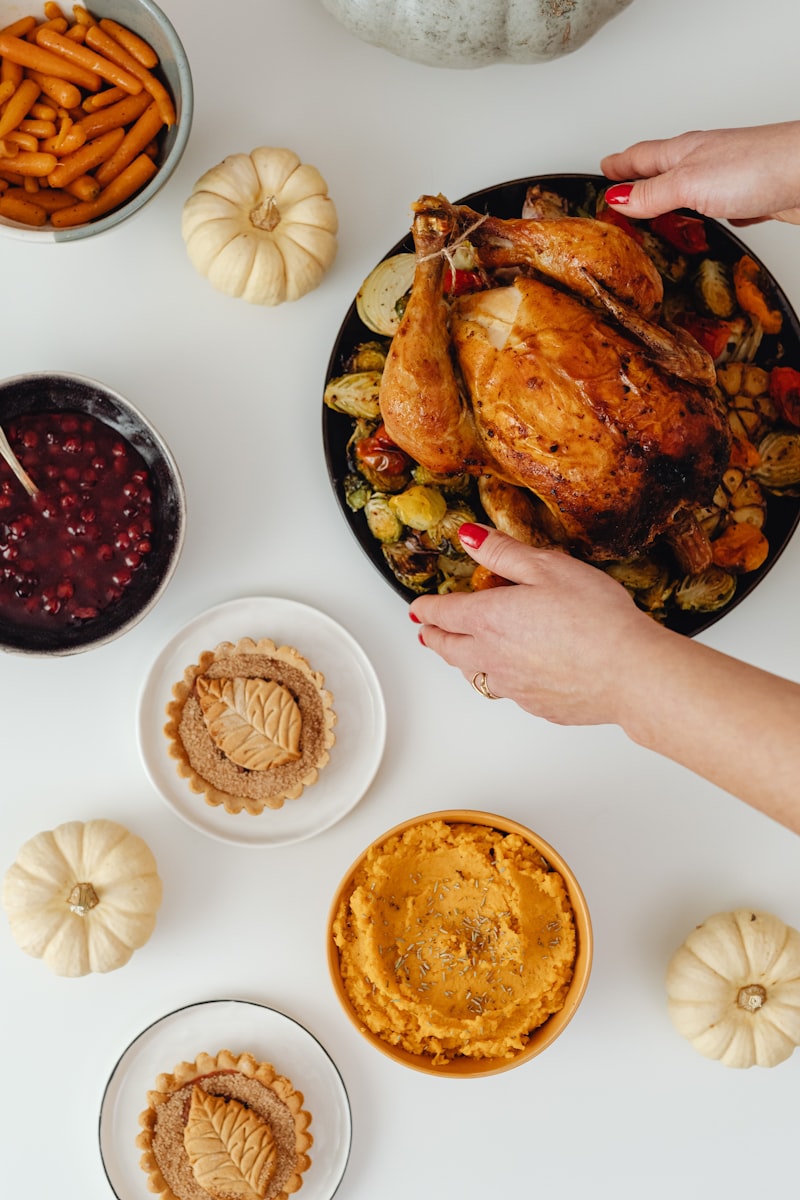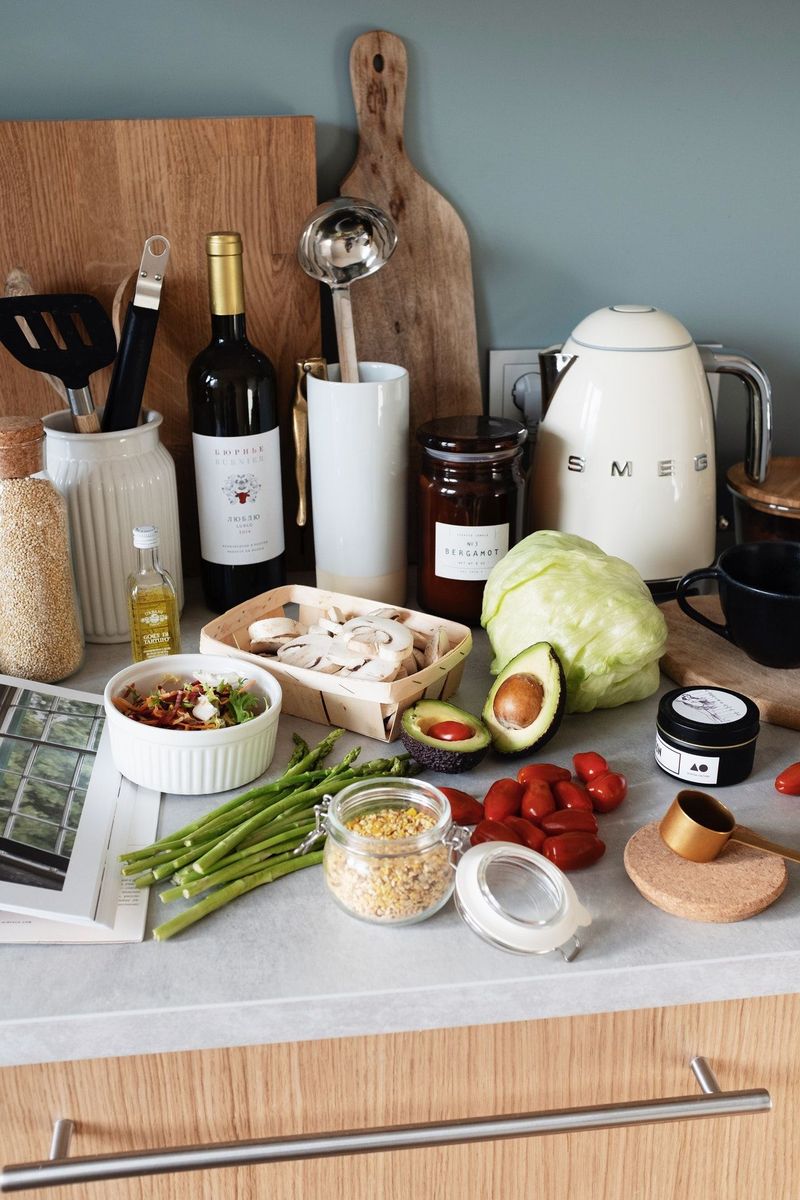Woks are an incredibly versatile kitchen pan. They are ideal for various tasks, from stir-frying to indoor smoking. Not only that, but they're often also the superior tool for the job. Furthermore, a well-looked after wok will likely serve you for a lifetime. Of course, not all woks are created equal. There are, in fact, a plethora of different shapes, sizes, metals, and handles to pick from when choosing a wok. However, suppose you take a shot in the dark when purchasing one. In that case, you may waste your money on an entirely inferior product. Also, if you fail to look after your wok correctly, it won't matter what you buy anyway as it will be useless to you. This guide will help you pick out the best wok for you and show you how to season it and keep it in good condition.
Why Use a Wok Anyway?
People tend to misunderstand woks and their actual function in the kitchen, with many assuming they work the same as frying pans.
It's important to understand that frying pans and woks do very different jobs. Frying pans, well fry, whereas woks stir fry. The former will make your food crispy and seared, whereas the latter cooks food at very high temperatures with constant stirring.
Here are some other reasons why a wok is a great purchase:
- Takes less time to heat up compared to other pans
- Consumes less heat and cooks ingredients uniformly (if you choose well and use the correct cooking technique) as it heats evenly
- Requires less oil compared to frying pans, making it a healthier way to cook
- Can cook more ingredients at once due to its large capacity, allowing for simultaneous cooking of ingredients in one pan
Things to Consider When Purchasing a Wok
The kind of wok you purchase will depend on your specific needs. But, that said, there are a few main points you'll always want to take into consideration:
- The kind of materials used to create the wok
- The manufacturing process that went into making the wok
- What type of handle the wok has
- Whether the wok's shape is suitable for your hob setup
- Whether or not you need a lid
Let's take a closer look at each of these points.
Wok Materials
All woks are made from one of three materials: stainless steel, cast iron, or carbon steel.
Stainless steel woks
Stainless steel woks do exist, but they're not particularly remarkable. Not only are they heavy and challenging to move around, but certain foods such as meat tend to stick to them. As such, they're typically best avoided.
Cast iron woks
Cast iron woks are a better option than stainless steel but still have some caveats. Namely, they take a long time to heat up and cool down, which isn't something you want from a wok. They're often also built to be too thin and fragile or too dense and difficult to maneuver.
Carbon steel woks
Carbon steel woks will always be your best bet as they do everything a wok should do. They heat evenly and quickly, are highly durable, and are relatively inexpensive. Plus, if you care for them properly, they develop a non-stick surface over time.
Wok Manufacturing Methods
Here are the three main wok manufacturing methods you'll typically come across.
Hand-hammered Woks
Hand-hammering is the traditional way of making woks. What's excellent about hand-hammered woks is that the indentations left from the hammering allow you to move cooked food to the sides of the pan while moving other ingredients to the center. Unfortunately, finding hand hammered wok with a flat bottom and handle can be challenging.
Stamped Woks
Stamped woks are steel pressed into a mold by machines. Unfortunately, they're almost always made with flimsy materials, and their smooth surface makes it difficult to stir fry properly. Best avoided.
Spun Woks
You'll be able to identify a spun wok by its distinct circular patterns around the pan. They offer all the same advantages as hand-hammered woks but are often more suitable in shape. That's because you'll find varieties with flat bottoms and decent handles.
Types of Wok Handles
There are two types of wok handles, Cantonese and Northern-Style. Cantonese woks have small handles on either side. Meanwhile, norther-style woks have larger handles that make them perfect for flipping and stir-frying, making them the obvious choice for most people.
If you can, get a northern style wok with a smaller handle opposite the larger one as this will make it easier to move around.
Choosing the Perfect Wok Shape
Traditional bowl-shaped woks are designed for hearths. As a result, they won't work on electric ranges and will be a struggle to use on gas ones, even if you have a dedicated wok ring. On the other hand, if the bottom of your wok is too flat, it defeats the purpose of having one in the first place. Typically speaking, a wok with a flattened base four-to-five inches wide is likely your best bet. It will work on most modern appliances and still give you all the benefits of a traditional wok.
Should You Get a Lid for Your Wok?
Stir-frying does not often need a lid. However, suppose you plan to use your wok as an all-in-one or for more traditional Chinese cooking. In that case, a cover might be a worthy buy since this will allow you to use your wok for steaming or braising.
How to Season and Maintain Your Wok
A good carbon steel wok will get better over time the more you use it. Most come with a protective layer to prevent rusting in the store, but it's best to remove it the first time you use it and season the pan yourself.
Here's how to season your wok:
- Scrub the wok with hot soapy water and dry it thoroughly
- Place it over a burner on the highest heat until it starts to smoke. Be sure to rotate the pan to expose the entire area
- Rub the wok with oil using a paper towel held via tongs, and that's it! Your wok is good to go.
When it comes to cleaning your wok after use, avoid scrubbing at all costs or using too much soap. Indeed, some purists would say not to use soap at all. Whatever you do, though, do not leave the wok to dry on the rack. Instead, dry it with a paper towel or kitchen towel and rub it with oil to prevent rust. Over time, the wok will go from silver to brown and then to black. Don't worry when this happens, as it is, in fact, the desired effect. When you use your wok, oil breaks down due to heat and fills the metal's pores, rendering it non-stick.
How to Restore a Wok
Have an unloved wok that's gone rusty in your cupboard? Worry not. With a bit of work, you can restore your wok.
Here's how to restore a neglected wok:
1. Scrub the wok with mild detergent to get as clean as possible
2. Hand dry and place over high heat, then allow to cool
3. Rinse and scrub lightly again but this time, dry over the stove
4. Continue heating the wok on low heat and pour in a bit of oil and swirl evenly
5. Take the wok off the heat and use a paper towel to spread the oil, ensuring there is no standing oil. It should now be ready to use again.
Guide to Buying, Seasoning, and Maintaining a Wok






